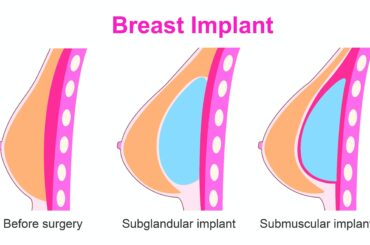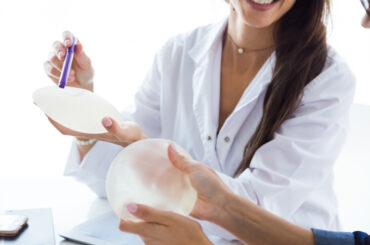In Spring of 2012, the silicone breast implant turned 50 years old. It may be hard to believe, but the traditional breast implants that we know today have been around for five whole decades; the practice—or the attempted practice—of surgically enhancing a woman’s bust-line, however, is much older than that:
Fact #1: Breast Implants Were Not Always Made of Silicone
The first successful breast enlargement surgery may have been performed in the early 1960’s, but it was by no means the first attempt. Doctors spent almost a century trying to discover how to place foreign substances into a woman’s chest in order to make her breasts bigger. Some of the early materials may seem strange or even outright mind-boggling.
Early breast implant materials include:
Ox Cartilage
It was not uncommon for doctors to experiment with placing similar parts from other animals into the human body for medical reasons. The practice is still used today; cartilage grafts from pigs, cows and other animals which are somewhat biologically similar to humans are often used to replace a faulty heart valve or repair torn ligaments and tendons. Unfortunately, the process did not work for breast enhancement.
Artificial Spheres
Globes made from all sorts of substances, including but not limited to glass, ivory, and other painful-sounding materials, were surgically inserted during the early years of implant experimentation. As you can imagine, many of these surgeries ended with disastrous results!
Other Artificial Substances
In order to mimic the feel of a natural breast, would-be surgeons eventually stopped using hard spheres and instead experimented with sponges, wool, ground rubber, and other similar “fillers” to find something they could use to enhance breast tissue. Many of these failed, often due to infection and other deadly complications.
Saline
Saline implants are very popular and still widely used to this very day. The saline in this type of implant is no different from the saline found in eyedrops or contact lens solution. Because saline is similar in composition to fluids that occur naturally within human body, there are fewer health risks if the implant ruptures. Some patients, however, complain that these implants are not as aesthetically pleasing as silicone.
Fact #2: Breast Implant Popularity (By Country)
Have you ever wondered which countries have the highest number of breast implant surgeries each year? Well, a lot of it has to do with overall population; the more women a developed country has, the more popular breast implants will be. Therefore, it should come as no surprise that the United States came first in 2010, followed by Brazil and Mexico.
But to put the numbers into context, you have to look at the number of surgeries performed per capita. Once you analyze that data, the US ranks fifth in the entire world. Brazil, however, ranks first in breast implants per capita, followed by Greece, Italy, and Colombia.
Fact #3: Breast Implant Safety and Important Recalls
For years, there have been rumors that breast implants are bad for your health. No conclusive evidence has been found to verify these claims, but that doesn’t mean that there aren’t inherent risks associated with implant ruptures.
Additionally, one particular type of implant has recently been recalled. A French company called PIP (Poly Implant Prothèse) was found guilty of using a sub-standard type of silicone in their implants. This sub-standard silicone could lead to serious complications if the implant ruptures.
Any women who have implants manufactured by PIP should consult their doctor immediately to see if the recall applies to them.
What About Natural Breast Enhancement?
If you want to increase your cup size, but aren’t sold on breast implants, or don’t feel like shelling out thousands on a breast implant operation, there is hope. Have you considered trying an natural breast enhancement? There are herbally-based pills and creams which can help your breasts grow naturally, and they’re not as risky or expensive as undergoing surgery. The key is to select the right product, and we’ve made that job easy for you by reviewing and ranking the top products on the market today. Check out our product comparison chart for more information!





